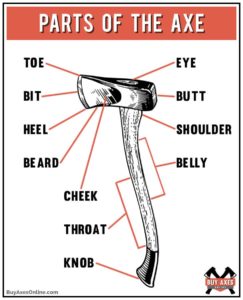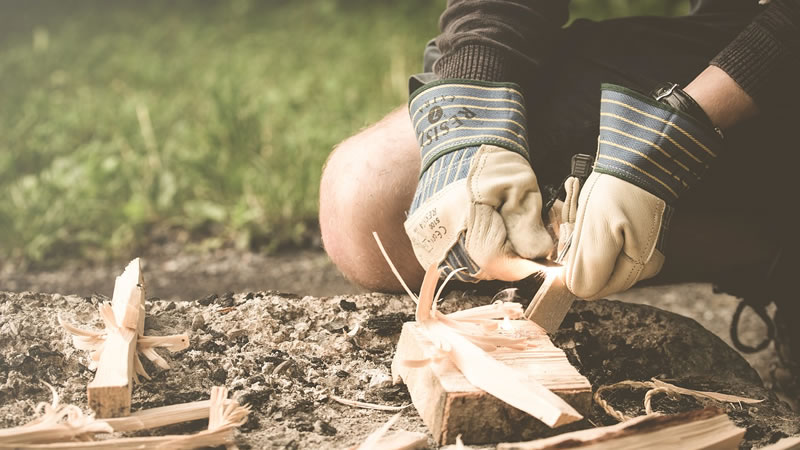Bushcraft axes are a fundamental tool for survival and outdoor enthusiasts. These axes are not just tools for wood chopping but versatile instruments essential for building shelters, crafting tools, and even foraging for food. This comprehensive guide will delve into the world of bushcraft axes, exploring their features, uses, and how to choose and maintain them effectively.
The Essence of Bushcraft Axes
Bushcraft, the art of surviving in the wild using natural resources, requires tools that are robust, reliable, and versatile. The bushcraft axe stands out as a critical component in any bushcraft enthusiast’s kit. Unlike its larger counterparts used in forestry, the bushcraft axe is smaller, lighter, and designed for precision work.
Anatomy of a Bushcraft Axe

A typical bushcraft axe comprises a head and a handle. The head is usually made from high-quality steel, and the handle from durable wood like hickory or ash. The design of a bushcraft axe is focused on balance and versatility, allowing for both chopping and detailed work.
Components of a Bushcraft Axe:
- Head: Compact and lightweight for ease of carrying and maneuverability.
- Bit: The sharp cutting part of the head, designed for both chopping and carving.
- Poll: The opposite end of the bit, which can be flat for hammering.
- Handle: Shorter than felling axes, providing control and precision.
Types of Bushcraft Axes
Bushcraft axes come in various designs, each suited to specific tasks.
1. General-Purpose Bushcraft Axe
- Characteristics: Medium-sized head with a 2 to 3-pound weight and a handle around 20 inches long.
- Best for: A range of tasks including chopping, splitting small logs, and carving.
2. Hudson Bay Axe
- Characteristics: Lightweight with a thin, wide bit and a short handle.
- Best for: Light chopping and splitting, suitable for carrying over long distances.
3. Tomahawk
- Characteristics: Very lightweight with a small head and a straight handle.
- Best for: Precision tasks, throwing, and as a backup survival tool.
4. Small Forest Axe
- Characteristics: Compact and lightweight, often with a handle around 19 inches long.
- Best for: Versatility in various bushcraft tasks, from chopping to carving.
Choosing the Right Bushcraft Axe
Selecting the right bushcraft axe involves considering the following factors:
- Purpose: Determine the primary use – chopping, carving, or a mix of different tasks.
- Size and Weight: Choose a size and weight that you can comfortably carry and wield.
- Handle Material: Decide between the traditional feel of wood or modern materials like fiberglass.
- Quality of Steel: High-carbon steel is preferred for its durability and ease of sharpening.
How to Use a Bushcraft Axe
1. Chopping and Splitting Wood
- Use a stable stance and grip the end of the handle firmly.
- Swing the axe in a controlled arc, letting the weight of the head do most of the work.
2. Carving and Crafting
- For precision tasks, grip the handle closer to the head for better control.
- Use smooth, controlled strokes to shape wood.
3. Building Shelter
- Use the axe for cutting poles and notching wood to construct shelters.
- The poll can be used for hammering stakes.
4. Safety Precautions
- Always be aware of your surroundings and maintain a safe distance from others.
- Wear appropriate protective gear like gloves and safety goggles.
Maintaining Your Bushcraft Axe
Proper maintenance is key to the longevity and effectiveness of your bushcraft axe.
1. Sharpening the Edge
- Regularly sharpen the bit using a file or sharpening stone, maintaining the original angle.
- Finish with a strop for a razor-sharp edge.
2. Caring for the Handle
- Inspect the handle regularly for cracks or splinters.
- Treat wooden handles with oil to prevent drying out.
3. Storing the Axe
- Keep the axe in a dry place and use a sheath to protect the edge.
- Avoid exposing the axe to extreme temperatures or moisture.
Bushcraft Axe Skills and Techniques
Developing skills with your bushcraft axe will enhance your ability to thrive in the wilderness.
1. Fire Preparation
- Use your axe to split wood and create kindling for fires.
- The axe can also be used to strike a fire steel in the absence of matches or a lighter.
2. Tool Making
- Craft basic tools such as stakes, spears, or fishing implements using the axe for carving.
3. Foraging and Hunting
- While not a primary hunting tool, the axe can be used in preparing traps or processing game.
4. Advanced Bushcraft Techniques
- Learn advanced skills like creating notches for joinery or hollowing out wood for utensils or containers.
Choosing a Bushcraft Axe for Survival
In a survival scenario, your axe can be your lifeline. Look for a robust, multi-purpose axe that can handle a variety of tasks from building shelter to procuring food.
Conclusion
The bushcraft axe is much more than a tool for chopping wood; it’s a versatile companion in the wilderness. Whether you’re on a backcountry adventure, practicing survival skills, or simply enjoy bushcraft as a hobby, the right axe can significantly enhance your experience. Remember, skill and safety go hand in hand with bushcraft, so practice regularly, maintain your tool, and respect the wild. With the right bushcraft axe in hand, the wilderness becomes a place of endless possibilities and adventures.
